
Shrubs Around Las Vegas, Vegetation Around Las Vegas
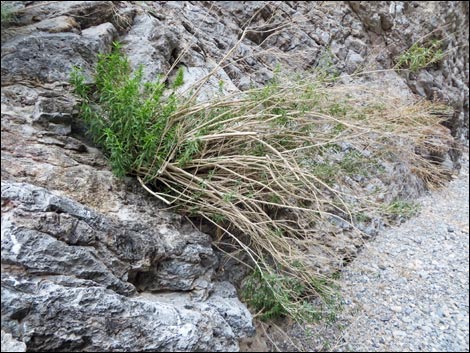 Seep Willow habitat in the bottom of a narrow canyon |
General: Mule Fat (Baccharis salicifolia) is a fairly large shrub with long, linear leaves that look like willow leaves, but it has flowers rather than the catkins of true willows. Also like willow, it grows in damp places. The leaves are elongate, up to 6-inches long and 1/2-inch wide, finely toothed over their entire length, and slightly sticky. The leaves persist through flowering. Flowerheads are terminal and in flat-topped or pyramid-shaped clusters. Involucres are hemispheric with short phyllaries (2-4 mm long). Plants are male and female. Male flowerhead contain up to about 50 flowers, while female flowerhead contain up to about 150 flowers. Flowers white to pale yellow with red highlights. As with true willows, Seep Willow is a fairly common component of vegetation communities in canyons, washes, along streams, and other moist places in the Lower Sonoran (Creosote-Bursage Flats) and Upper Sonoran (Mojave Desert Scrub) life zones. Family: Sunflower (Asteraceae). Also called Seep Willow. |
 Upright shrub |
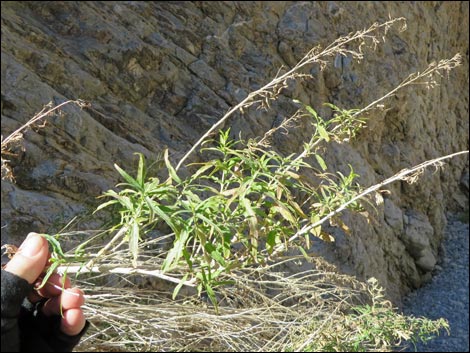 Shrub with long, wispy stems and long, linear leaves |
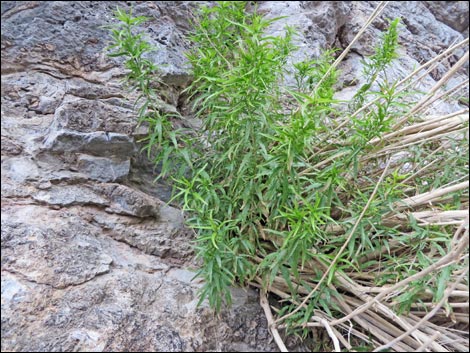 |
 |
 White bark and long, linear leaves |
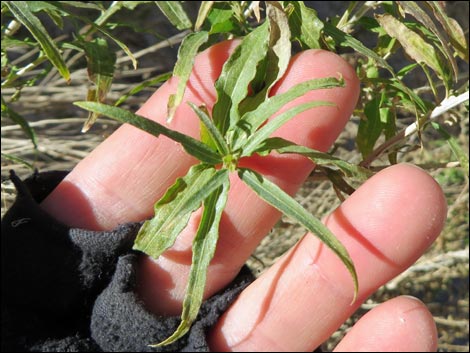 Long, linear leaves |
 |
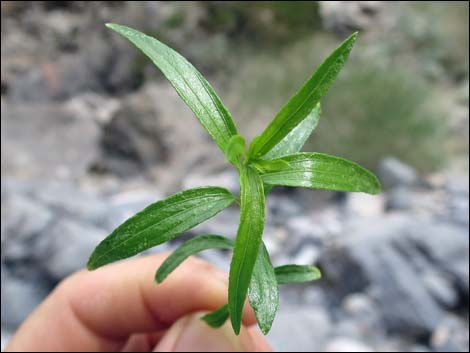 |
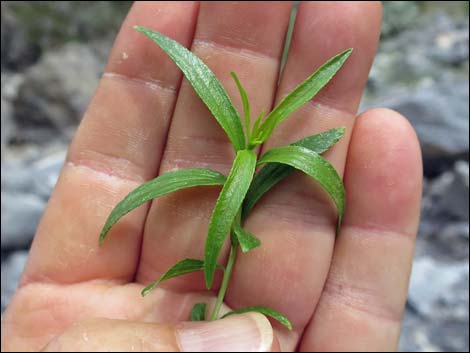 |
 |
 Leaved, dorsal and ventral surfaces |
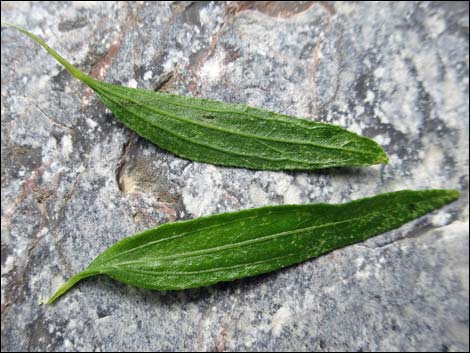 Leaved, dorsal and ventral surfaces |
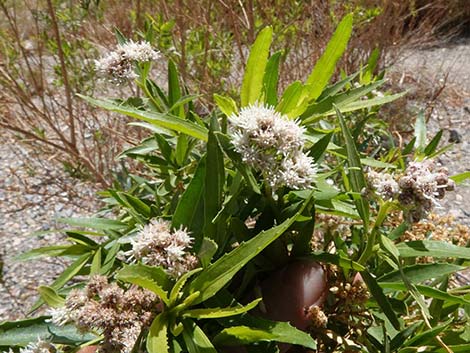 |
 |
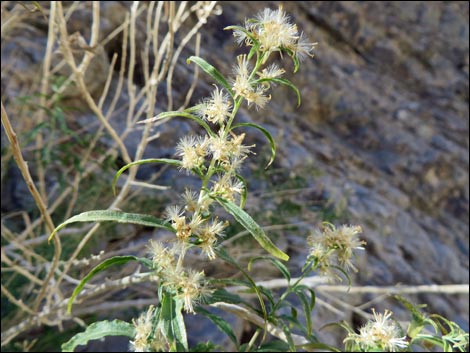 Dried flowers |
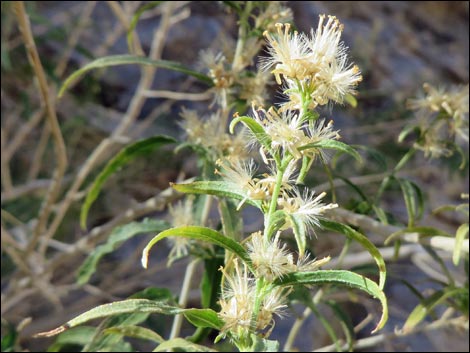 Dried flowers |
Note: All distances, elevations, and other facts are approximate. Names generally follow the USDA database.
![]() ; Last updated 240913
; Last updated 240913
| All Shrubs | Plant Species Index | Glossary | Copyright, Conditions, Disclaimer | Home |